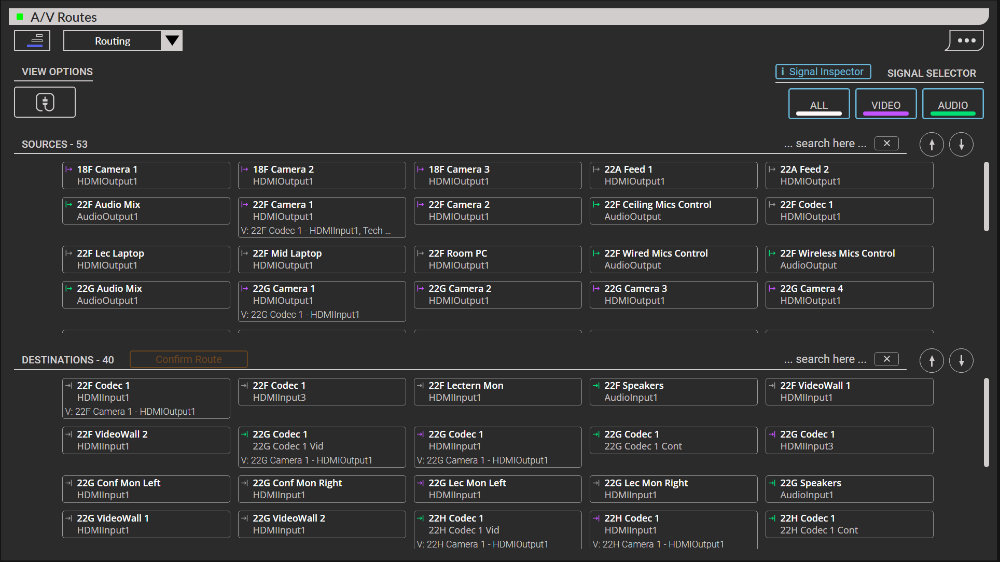31-07-2025
Case Study: How Lucid’s Blueprint Transformed AV Deployment at UCL
Lucid is on a mission to create accessible, functional AV solutions that empower clients, while easing operational pressures. With an ongoing focus on integrating smart design and robust software, Lucid develops technology that saves time, cuts costs and eliminates complexity for its users. The latest step in this journey is Blueprint, a next-generation audiovisual control platform that has redefined how AV systems are deployed and managed.
The Challenge
University College London (UCL), like many institutions, faces the challenge of managing a vast, diverse AV estate. With numerous room types and configurations, ensuring consistency and control over audiovisual systems had become a complex, resource heavy task. The university needed a scalable solution that would allow their in-house AV team to deploy and manage systems quickly, without the need for deep programming knowledge or ongoing external technical support.
The Solution
Lucid’s Blueprint Design Tool, powered by Microsoft Azure, allows AV teams to “draw their code”, turning design schematics into working control systems using a visual interface. From planning routing and device logic to assigning drivers, the entire deployment process can take as little as one hour. This revolutionary tool empowers users to configure and replicate systems without writing complex code or relying on consultants. For UCL, this has meant a step change. As Emmanuel Tychus, AV Technical Specialist, Customer Operations, Information Services Division, at UCL, explains:
“With the sheer number, diversity of room types and spaces to be managed, the coding requirements are considerable. The simplicity and power of the Blueprint Design Tool cuts out the necessity for complex programming and allows us to drive the development process ourselves. We are now in control, whilst delivering a considerable saving by removing the need for outside technical support. At the same time, the standardisation of coding allows us to update room space details quickly and easily.”
Using Blueprint, UCL can rapidly configure and update classrooms and meeting rooms with consistent, reliable functionality, regardless of hardware variation. Repeatable code, robust testing and a user-friendly HTML5 interface allow for quick room turnover and confidence in every deployment.
The Results
- Reduced Costs – internal teams can now develop and deploy AV systems independently.
- Scalability – Blueprint supports a wide range of room types, from simple meeting spaces to advanced Master Control Rooms.
- Speed – AV systems can be deployed or redeployed in under an hour.
- Sustainability – on site visits from support staff are drastically reduced, cutting transport emissions.
- Energy Efficiency – integration with remote monitoring platforms supports smart shutdown scheduling, reducing energy waste.
Lucid’s engineers work collaboratively with clients to match room control logic to real-world expectations, ensuring every project is fit-for-purpose, without requiring Lucid’s physical presence.
A Platform for the Future
Beyond education, Blueprint is already in use across the Financial, Enterprise and Commercial sectors. Its standardised yet customisable approach bridges the gap between simplicity and sophistication. Complex spaces like divisible rooms or multi-function control environments can be handled with the same intuitive interface, ensuring all users benefit from rapid development and consistent performance.
In-house AV teams are no longer restricted by external timelines or high consultancy costs. Instead, they can respond to changes in scheduling and infrastructure in real-time, while retaining full control and confidence in the AV systems they manage.
Are you ready to take control of your AV systems?
At Lucid, we work closely with clients to develop solutions that deliver real efficiency, flexibility and performance, without compromising on ease of use. Get in touch to learn how Blueprint can support your AV strategy.






